With no law against light pollution in India yet, Mumbai residents fight floodlights and streetlamps for a good night's sleep or even walk on the roads safely without being blinded by oncoming vehicles
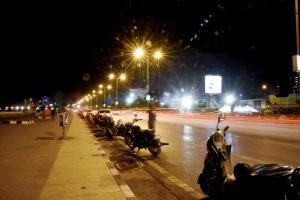
Marine Drive Promenade, 22 LUX
For the last three years, Charni Road resident Nilesh Desai has been at loggerheads with the several gymkhanas in his area. The floodlights being used there, argues the IT professional, cut through and enter the homes of locals, giving rise to a series of health problems, such as retinal damage, uneasy sleep, increased headaches, mood swings and anxiety. "But most people are not aware that they are being victimised by light pollution.
Also Read: Mumbai: Drummers leave citizens banging heads on the wall
It is a serious concern. We have a right to live a healthy life, and these floodlights have been causing a nuisance. Each time there is a party or function, the gymkhanas keep the floodlights on till late in the night," he says.
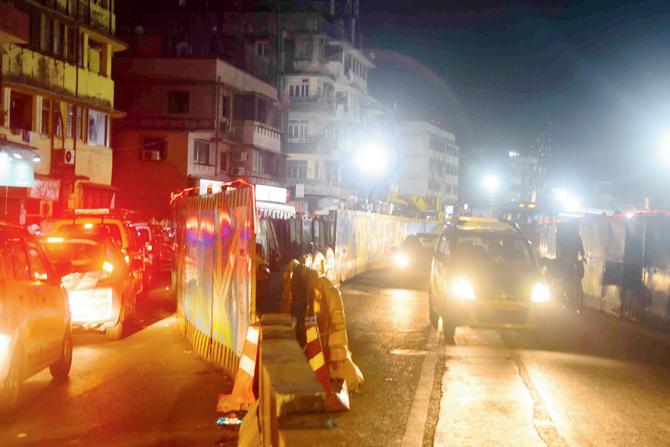 Mahim Mahim Dargah, Lady Jamshetjee Road. Pic/Atul Kamble
Mahim Mahim Dargah, Lady Jamshetjee Road. Pic/Atul Kamble
While Desai recently scored a victory against Wilson Gymkhana, which pulled down its high-mast floodlights after the collector pointed out they did not have the permission to use them, the 35-year-old also wrote to the Marine Drive police station recently, complaining against the floodlights on the tennis court of Hindu Gymkhana. "The gymkhana turns on its tennis court floodlights at 5.30 am, which deprives residents of nearby buildings of quality sleep," reads the complaint letter sent to the police on March 16. In the letter, Desai wrote, "Residents have to put up blinds at night to avoid morning light pollution, originating from floodlights, which, in turn, deprives us of fresh sea breeze."

Gokhale Road, North, Dadar. 532 Lux
Desai isn't alone in his quest. The Collector of Mumbai, Shivajirao Jondhale, tells mid-day that his office receives regular complaints regarding light pollution. "Though, there is no law to prevent light pollution, the police take action under Bombay Police Act (which states that anyone creating any form of nuisance to the public in general, through any activity is liable to be punished)," said Jondhale, adding, "Either the High Court or the government should legislate a law to prevent this menace for the welfare of citizens."
Meanwhile, Desai wants the timings of weddings and other events at the local gymkhanas, which require the use of floodlights, be restricted to 10 pm. That is not all. "I have also been fighting against light pollution from a heavily-lit hospital advertisement billboard in my locality, which used to be on through the night. It took me four months to get justice after continuous follow up with the civic authorities."
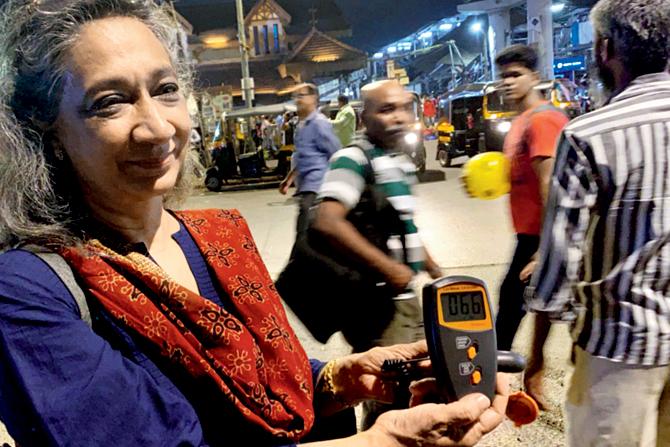
Bandra station, 66 LUX
Blinded in Mumbai
Activist Sumaira Abdulali (in pic below), known for campaigning against sound pollution, points out that there's no real definition of what constitutes light pollution. "The boundary line to define light pollution is hazy as people are affected differently by the same lighting source. It is common for one person's light pollution to be light that is desirable to another. The 'pollution' is felt in day-to-day life in terms of light pouring in from a neighbour's property, street lighting, lit hoardings and advertising clutter. Car headlamps are unchecked for colour, intensity or beam angles, causing blinding glares and temporary blindness to drivers of oncoming cars, pedestrians and people living in neighbourhoods close to the roads, to whom it is the seed of sleeplessness, and thereby of the onset of multiple health conditions. Advertisers are not held in any way responsible for light clutter that is often the cause of accidents. In fact, as bright lights and colours attract drivers attentions, this is an outcome that is desired, and not one that is sought to be minimised."

Malad resident Dipesh Tank, also a TedX speaker, suffers from street lights entering his house at night. "While the easiest solution is to close the window and draw the curtains, this adds to the carbon footprint, as closed rooms will need AC. We spend enough money on tax for authorities to have smarter way of installing street lights." Pic/Satej Shinde
Abdulali's organisation Awaz Foundation in 2017 conducted a study on light pollution, measuring the ambient light levels along Juhu Beach. As per the report, the lux level underneath the lights then (at a height of 100 feet) through the landward side of the beach was 67,000 lux, while near the edge of the water, it was 0.03 lux.
As per experts, the human eye should not be exposed directly to lux levels exceeding 50-60. The report was submitted to the state environment department and the BMC in December 2017, after which the intensity of lights at the beach was reduced.
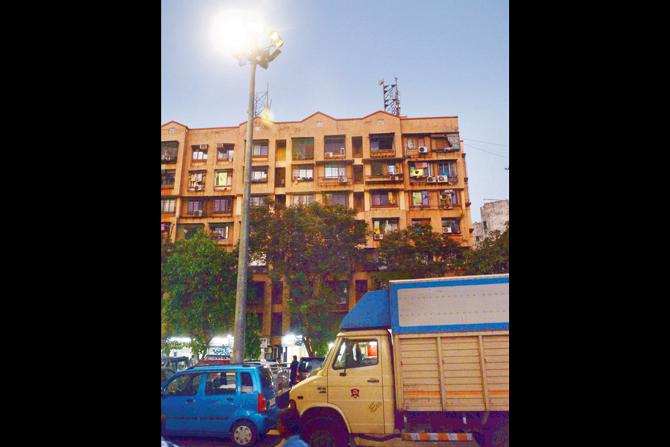
Abdulali, along with mid-day, armed with a lux meter, went to two spots to check the lighting. At Gateway of India, the reading showed 26 and at Bandra station, 66. "The lights at Gateway were not disturbing, but the lights at Bandra station (West) were erratic. The temperature and colour of lights are questionable because the blue lights are more disturbing than yellow lights." Later, the mid-day team, too, went to different spots in the city to measure how much light we are subjected to.
If Gateway of India, at a reading of 26 lux, is the standard that should be permissible in the city, other spots were far too bright. Metro Inox cinema at Dhobi Talao brought up a reading of 74, nearly three time the intensity at Gateway, while the Metro site on Gokhale Road North and Ranade Road Junction presented a reading of 535.
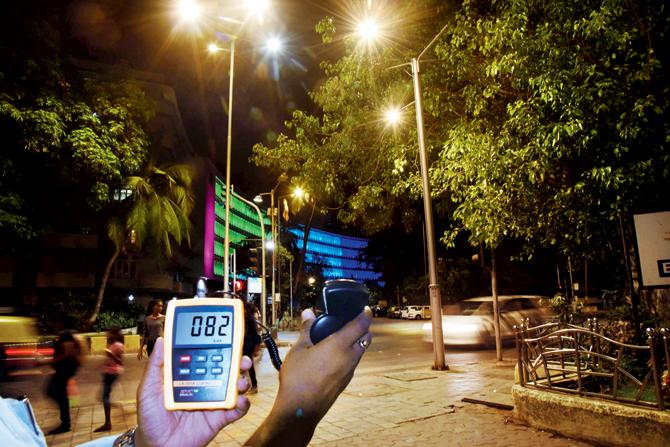
Air India and Yogakshema Junction, 82 LUX
Desai adds, "Metro Inox Cinema at Azad Maidan had put up a glaring digital, flickering display board, which could cause accidents at Metro junction. Recently, I filed an RTI with Mumbai traffic police to know, who has provided permission from MTP for setting up such bright display boards, and the norms around setting up advertisement boards. I received a negative response from MTP, but the brightness of light was reduced after filing the RTI. Mumbai Metro construction is another source of light pollution, as unshielded high-mast lights are used at construction sites, which are in close vicinity of residential complexes. I am planning to draft a letter to Mumbai Metro chief on light pollution awareness, with a request to put light shields to reduce lights that spill on to residential properties."
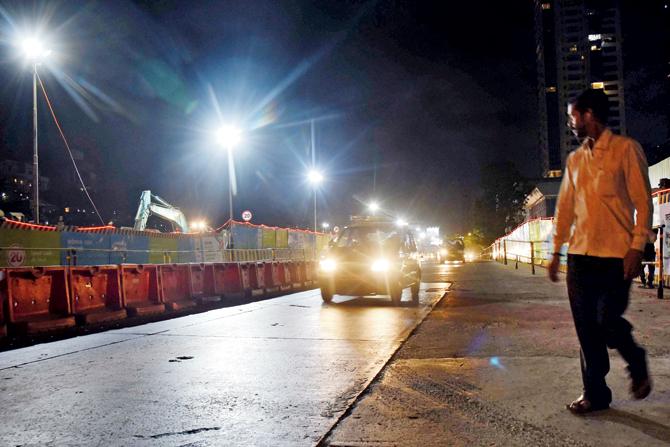
Metro site on Dr. Annibesant road, Worli. Pic/Atul Kamble
The high-mast lights at the ongoing Mumbai Metro construction sites also fall under light pollution. Sandeep Jalgaonkar, a Mahim West resident, where the Metro construction is underway, tells mid-day, "Here, the current width of the road is insufficient due to the ongoing Metro construction work, and it is very difficult to clearly see the traffic if a series of high-mast (white) lights penetrate into your eyes while driving."

Badhwar PARK, 87 LUX
How it affects your health
Sandeep Saroj, a resident of Yari Road, in Andheri West, says his eye doctor has now asked him to stay away from streetlights. The accountant, who spends his day staring at a computer screen anyway, adds, "I have been prescribed spectacles because of the streetlights. My doctor says the UV rays from the light are affecting my eyesight. Not only has he asked me to use eye drops regularly to protect my vision, but also mentioned that I should avoid high-voltage streetlights."
Dr. Vijay Shinde, a consultant eye surgeon at Apollo Clinic, Andheri East, says, "Bright white and cool fluorescent tube bulbs and incandescent bulbs emit the most UV radiation and cause the most damage to your eyes. Excessive exposure to blue light from sources, such as smartphones, tablets and some LED lighting, has also been shown to cause damage to eyesight according to the American Optometric Association."
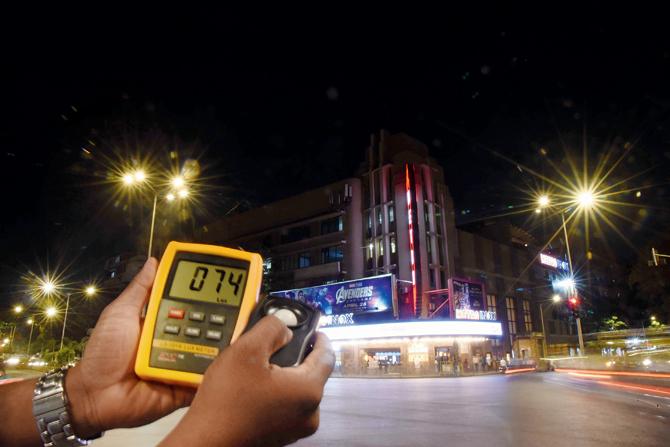
Metro Junction, 74 LUX
The amount of light the human eye can adjust to and find useful is between 400 and 500 microns. LED lights installed above hoardings, and in stadiums and open grounds, are more than 500 microns. Shinde adds that excess light can also affect sleep patterns. "The problem with LED lighting, when it comes to our already scrambled sleeping rhythms, is that it generates light of predominantly blue wavelengths, which your eyes are far more sensitive to than other wavelengths of light, and which tricks your brain into thinking that there is far more light in the environment than there actually is. This, in turn, causes your body to suppress its production of sleep hormones even more than would be the case otherwise."
Dr Abhay Deshpande, who has been studying and subsequently teaching astronomy since 1990, and runs Khagol Mandal, a society of astronomers in Mumbai, says the extent of light pollution is increasing each year. "In the past decade, we have rapidly achieved electrification in most parts of the country. Further, we have migrated to LED technology. Back in 2000, we could easily see Andromeda Galaxy as well as the Milky Way Belt with naked eyes at locations just 50 km away from Mumbai. Today, we are unable to see both these objects very clearly from most places. With the current predictions, 50 years on, the pollution could be so high that a clear night sky will be difficult to see. As an amateur astronomer, I feel that we should help maintain the dark skies, as it is a legacy that we will be passing on to the next generation."
Also Read: Mumbai: Skywalks located on SV road across three suburbs to make way for metro 2
Gymkhana speaks
Amit Shroff, tennis court secretary, at Hindu Gymkhana says, "I had asked Desai for photos clicked from his house to show how the lights are reaching his home. But, he has not sent these. To the best of my knowledge, we are not breaching any law." Regarding the issue of lights from weddings and other events on their grounds, he adds, "There are 20 weddings in a year in and even then, lights go off by about 11 pm. Desai seems to be continuing his grievance although his problem has been resolved for all practical purpose by getting the Wilson Gymkhana lights removed. Our gymkhana general secretary has also invited him for discussions but at such a short notice, I am not in a position to verify what has happened in that regard."
Catch up on all the latest Mumbai news, crime news, current affairs, and also a complete guide on Mumbai from food to things to do and events across the city here. Also download the new mid-day Android and iOS apps to get latest updates
 Subscribe today by clicking the link and stay updated with the latest news!" Click here!
Subscribe today by clicking the link and stay updated with the latest news!" Click here!









